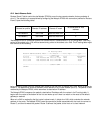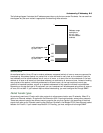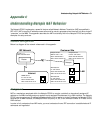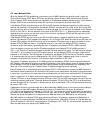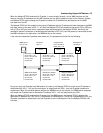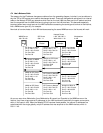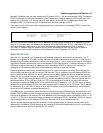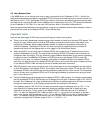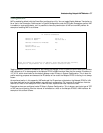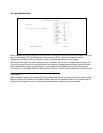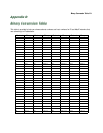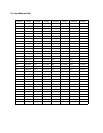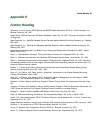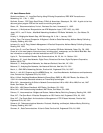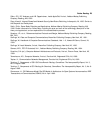C-6 User’s Reference Guide
If the WWW server on the Internet then tries to open a connection to the IP address of 200.1.1.40 with the
appropriate exported service defined, the Netopia R7200 will look at the destination port and will find that it is
destined for port 21 (FTP). The Netopia R7200 then looks at the internal user-defined exported services table
and finds that any incoming IP traffic from the WAN port with a destination of port 21 (FTP) should be redirected
to the IP address of 192.168.5.3 on the local LAN interface, which in this case is Workstation B.
Once the appropriate exported services are defined, there can be seamless communication between a host on
the Internet and a host on the Netopia R7200’s local LAN interface.
Important notes
Even with the advantages of NAT, there are several things you should note carefully:
■ There is no formally agreed-upon method among router vendors for handling an all-zeros IPCP request. The
majority of router vendors use the all-zeros IPCP request to determine when a dial-in host wants to be
assigned an IP address. Some vendors however attempt to negotiate and establish routing with an
all-zeros IP address. The Netopia R7200 will not allow routing to be established with an all-zeros IP
address and the call will be dropped with an error logged in the Device Event History.
■ When using NAT it is most likely that the Netopia R7200 will be receiving an IP address from a pool of
dynamic IP addresses at the ISP. This means that the Netopia R7200's IP presence on the Internet will
change with each connection. This can potentially cause problems with devices on the Internet attempting
to access services like WWW and FTP servers or AURP partners on the Netopia R7200’s local LAN
interface. In this case, if a dynamic IP address is assigned to the WAN interface of the Netopia R7200
each time, the administrator of the Netopia R7200 will have to notify clients who want to access services
on the Netopia R7200’s LAN interface of the new IP address after each connection.
■ With NAT enabled, there cannot be two or more of the same types of service accessible from the Internet
on the LAN interface of the Netopia R7200. For example, there cannot be multiple FTP servers (Port 23) on
the Netopia R7200's LAN interface that can be accessible by workstations on the Internet. This is because
there is no way within the Netopia R7200 and IP to distinguish between multiple servers using the same
port, in this case port 23.
■ Fictional IP addresses may be assigned on the Netopia R7200’s LAN interface. It is strongly recommended
that for the Netopia R7200’s LAN interface, an IP address from the Class C address range of 192.168.X.X
be used. This is because this range is defined by the IANA as an address space that will never be routed
through the Internet and is to be used by private Intranets not attached to the Internet.
If the address range of 192.168.X.X is not used and another range of addresses such as 100.1.1.X is
used instead, this address space can potentially overlap an address space that is owned by a user
attached to the Internet. Thus if a user on the Netopia R7200’s LAN interface has an IP address of
100.1.1.2 while the Netopia R7200’s LAN interface is 100.1.1.2 and the local host wants to access a
host on the Internet with the address of 100.1.1.8, the Netopia R7200 has no way of knowing that the
200.1.1.8 address is actually on the Internet and not on its local LAN interface, since the local LAN
interface is assigned the IP address range of 200.1.1.1 to 200.1.1.14.



